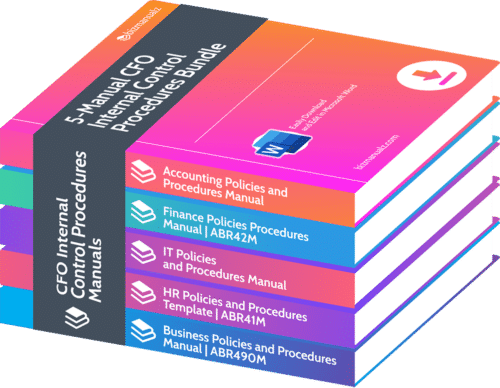What Is SOX Corporate Governance?

In the past, we experienced an avalanche in our financial system. Major financial institutions failed to the shock of investors and depositors, and there was such a high level of uncertainty in the financial system that availability of credit had been shut off even to the most highly rated borrowers. What does SOX Corporate Governance have to do with this?
SOX Corporate Governance
Corporate governance became very popular after the Enron scandal in 2001 and the subsequent Sarbanes-Oxley (SOX) Act in 2002. Corporate governance itself is a wide-ranging term, which describes the processes, policies, procedures, internal controls, laws, and institutions involved in guiding the organization’s performance to increasing long term shareholder value (Khan, 2011). Corporate governance consists of the methods used by outside shareholders to protect themselves from inside managers (La Porta, Lopez-De-Silanes, Shleifer, & Vishny, 2000), also known as the agency problem.
Focus of Corporate Governance
The focus of corporate governance is first, on ownership structure, investor protection and Return On Investment (ROI) in order to maximize firm value and performance, while moderating risk taking. Second, on the role of the board of directors, board performance, and board effectiveness, while overseeing CEO compensation and agency within an international governance environment. Research studies generally look at the impact of different corporate governance structures on managerial and organizational performance, but have had mixed results (Larcker, Richardson, & Tuna, 2007).
Prominent Corporate Governance Research
Corporate governance is a vast term and a well-researched topic. Searches on Google Scholar returned 2.35 million results for the term corporate governance with over 19,300 in 2019 alone, through the end of June (rate > 3,200 a month). Large industrialized countries are the focus of most of the empirical studies because of their easy access to data. Little is known about countries with different legal and economic settings. Small markets, and especially emerging market economies, are a significant weakness in the literature.
The most prominent research question in the corporate governance literature revolves around agency theory or the theory of the firm, equity prices, and investor protection. Prominent research in corporate governance includes (Citations – Research):
- 78,333 – Theory of the Firm: Managerial Behavior, Agency Costs, and Ownership Structure (Jensen & Meckling, 1976)
- 8,085 – Corporate governance and equity prices (Gompers, Ishii, & Metrick, 2003)
- 7,680 – Investor protection and corporate governance (La Porta et al., 2000)
- 4,752 – Corporate governance, CEO compensation, and form performance (Core, Holthausen, & Larcker, 1999)
- 3,526 – What matters in corporate governance (Bebchuk, Cohen, & Ferrell, 2009)
- 3,328 – A modest proposal for improved corporate governance (Lipton & Lorsch, 1992)
- 3,162 – Corporate finance and corporate governance (Williamson, 1988)
- 2,931 – Stockholders and stakeholders: a new perspective on corporate governance (Freeman & Reed, 1983)
- 2,487 – Financial accounting information and corporate governance (Bushman & Smith, 2001)
- 2,262 – Corporate governance, board diversity, and form value (Carter, Simkins, & Simpson, 2003)
Key Corporate Governance Findings
The agency problem is a major area a research, where professional manager may divert funds from the firm to themselves instead of returning it to investors. Bad corporate governance allows executive and director compensation packages to diverge from shareholders’ interests, while limiting shareholder control. Good corporate governance uses transparent rules and internal controls to align incentives between shareholders, directors and managers to keep firms competitive. Gompers et al. (2003) found companies with strong shareholder rights beat the risk-adjusted stock returns of those with weaker shareholder rights.
Key corporate governance methods or controls discussed in the literature:
- Regulations: transparency, shareholder protection, limits to self-dealing, contracts, Sox Accounting Policies and Procedures
- Ownership: dominant shareholders, shareholder activism, takeovers, boards
- Compensation practices: incentive based
- Stakeholder pressure: analysts, auditors, competition, credit monitoring, internal controls
- Informal governance measures: codes, reputation, social norms, trust
 Transparency and Due Diligence
Transparency and Due Diligence
The root cause of this, one could argue, is the lack of transparency and due diligence. Financial institutions did not collect the proper information from people they were lending money to. Those buying packaged securities containing bad loans apparently didn’t really know what they were buying. Those engaged in credit default swaps didn’t really know the viability of the institutions they were insuring and didn’t have the capital to pay the defaults should an institution fail. Without the necessary transparency and due diligence then lies and deception go unchallenged, particularly when people are being dishonest with themselves.
But wait a minute! Wasn’t Sarbanes-Oxley (SOX) supposed to put an end to all that? Aren’t public companies, financial or otherwise, supposed to have an accounting internal control system in place as well as checks and balances to prevent unrealistic, overly optimistic projections and reporting? Obviously, though well-intentioned, SOX has not been as effective as it should be in preventing fraud, abuse, and intentional ignorance. It apparently also has not been successful at encouraging organizations to implement effective financial internal control systems and improve corporate governance.
Proper Internal Controls
Transparency and due diligence are two positive results of a proper internal control system, which is required by the Sarbanes-Oxley Act. SOX corporate governance deals with requirements that are simple and straightforward (i.e., an independent auditor), the internal system mentioned in sections 302 and 404 seems to be little understood, and the cause of most of the confusion surrounding SOX. Yet, it is this provision of Sarbanes-Oxley which could have done the most to prevent the crises.
An effective internal control system would have ensured that information provided by loan applicants be verified as accurate, and established that applicants had the means to repay the loan. An internal control system would have ensured the due diligence and transparency by investment banks and institutions buying these mortgages bundled into investment securities, which obviously didn’t happen. It would have required that those selling default swaps understand what they were insuring and that they have the means to back them up. Although that is the common method, but when a person opts for bad credit loans monthly payments, they void all the pressure of giving something as collateral, making their life less stressful. A person can always choose a multi-billion dollar financial firm but if bad credit is what they are worried about and if they want a quick loan then choosing an online verified company with approved lenders is the best way to go.
Not only are meaningful financial control systems apparently being ignored or misunderstood by those running many publicly traded companies, they are apparently ignored or misunderstood by auditors as well. Many of these companies, especially banks, had to have undergone several audits since Sarbanes-Oxley took effect. Can regulations like SOX be effective if auditing systems to ensure compliance aren’t effective?
What Corporate Governance Questions Remain?
How do small equity markets affect corporate governance? In Denmark, some shareholders focus on environmental awareness or ethical behavior instead of firm profitability. In China, maintaining (state) control is more important than firm profitability. Japan has relatively weak shareholder protections, but a large equity market; while Italy, Germany and France have weak shareholder protections and relatively small public equity markets (Elston, 2018). Little research has been done on emerging market economies (Li, Terjesen, & Umans, 2018), or on corporate governance using grounded theory. Research regarding how small equity markets affect corporate governance would contribute to our understanding of corporate governance and how it is impacted by alternate shareholder objectives.
Does Corporate Governance Work?
So, what’s the deal with SOX Corporate Governance? Are Sarbanes-Oxley regulations working? Obviously not very well for many publicly traded companies who just did the minimum in order to comply. For organizations that took the initiative to put effective, meaningful internal control systems in place and created a culture of transparency and due diligence – it is probably working much better.
Corporate Governance: What Lessons Can We Learn?
How well are internal control systems functioning in your business? We frequently point out that having an internal control system, whether for finance and accounting or for production, is not just about doing the minimum in order to comply with regulations like Sarbanes-Oxley or standards like ISO 9001. The goal of an internal control system is to improve an organization’s overall effectiveness and efficiency in order to achieve shareholder objectives across the organization; in finance, sales, design, manufacturing, and elsewhere in the organization.
When the only goal of an internal control system is compliance, then you are doing the absolute minimum. Basic compliance at the lowest level does not really protect your investors, your employees, your customers, and other stakeholders. Those banks and financial institutions, however, using an internal control system to continually improve and strengthen the organization, are much more to likely to be left standing when the financial world stops spinning. That is lesson we should all take to heart, no matter what kind of business we are in.
Our products will give you a head start by providing procedures based on industry best practices, and they come in an easy to edit Microsoft Word format. To learn more about Bizmanualz Accounting Procedures check out the Accounting Policies and Procedures Manual or download a free sample accounting procedures right now.
Corporate Governance References
- Bebchuk, L., Cohen, A., & Ferrell, A. (2009). What Matters in Corporate Governance? Review of Financial Studies, 22(2), 783-827. doi:10.1093/rfs/hhn099
- Bushman, R. M., & Smith, A. J. (2001). Financial accounting information and corporate governance. Journal of Accounting and Economics, 32(1-3), 237-333. doi:10.1016/s0165-4101(01)00027-1
- Carter, D. A., Simkins, B. J., & Simpson, W. G. (2003). Corporate governance, board diversity, and firm value. Financial review, 38(1), 33-53.
- Core, J. E., Holthausen, R. W., & Larcker, D. F. (1999). Corporate governance, chief executive officer compensation, and firm performance1The financial support of Nomura Securities and Ernst & Young LLP is gratefully acknowledged. We appreciate the able research assistance of Dan Nunn. We acknowledge the helpfu. Journal of Financial Economics, 51(3), 371-406. doi:10.1016/s0304-405x(98)00058-0
- Elston, J. (2018). Corporate governance: what we know and what we don’t know. Journal of Industrial and Business Economics(46), 147–156. doi:10.1007/s40812-019-00115-z
- Freeman, R. E., & Reed, D. L. (1983). Stockholders and stakeholders: A new perspective on corporate governance. California management review, 25(3), 88-106.
- Gompers, P., Ishii, J., & Metrick, A. (2003). Corporate Governance and Equity Prices. The Quarterly Journal of Economics, 118(1), 107-156. doi:10.1162/00335530360535162
- Jensen, M. C., & Meckling, W. H. (1976). Theory of the firm: Managerial behavior, agency costs and ownership structure. Journal of Financial Economics, 3(4), 305-360. doi:10.1016/0304-405x(76)90026-x
- Khan, H. (2011). A Literature Review of Corporate Governance. Paper presented at the 2011 International Conference on E-business, Management and Economics.
- La Porta, R., Lopez-De-Silanes, F., Shleifer, A., & Vishny, R. (2000). Investor protection and corporate governance. Journal of Financial Economics, 58(1-2), 3-27. doi:10.1016/s0304-405x(00)00065-9
- Larcker, D. F., Richardson, S. A., & Tuna, I. R. (2007). Corporate Governance, Accounting Outcomes, and Organizational Performance. The Accounting Review, 82(4), 963-1008. doi:10.2308/accr.2007.82.4.963
- Li, H., Terjesen, S., & Umans, T. (2018). Corporate governance in entrepreneurial firms: a systematic review and research agenda. Small Business Economics. doi:10.1007/s11187-018-0118-1
- Lipton, M., & Lorsch, J. W. (1992). A modest proposal for improved corporate governance. The business lawyer, 59-77.
- Williamson, O. E. (1988). Corporate Finance and Corporate Governance. The Journal of Finance, 43(3), 567-591. doi:10.1111/j.1540-6261.1988.tb04592.x
















Leave a Reply